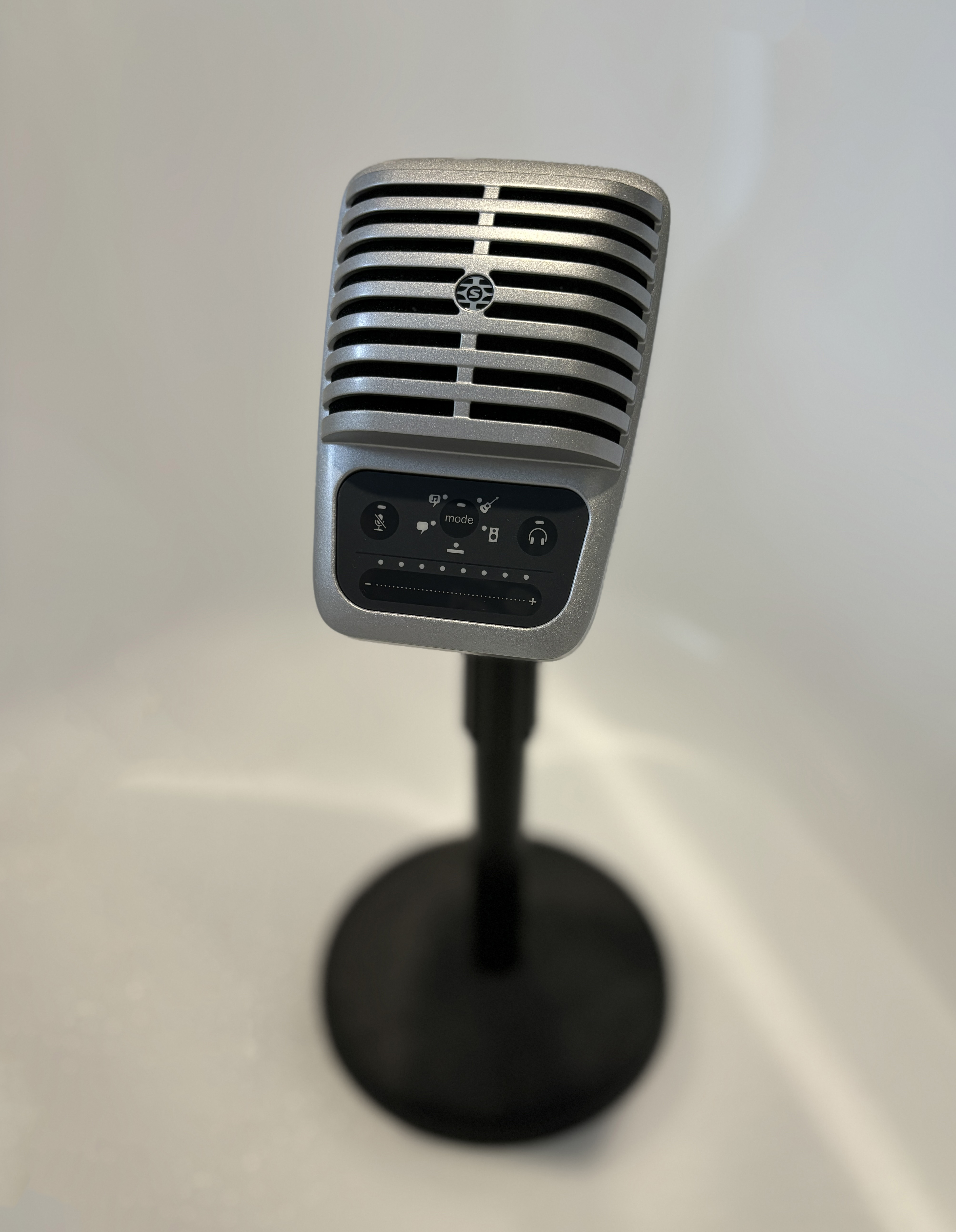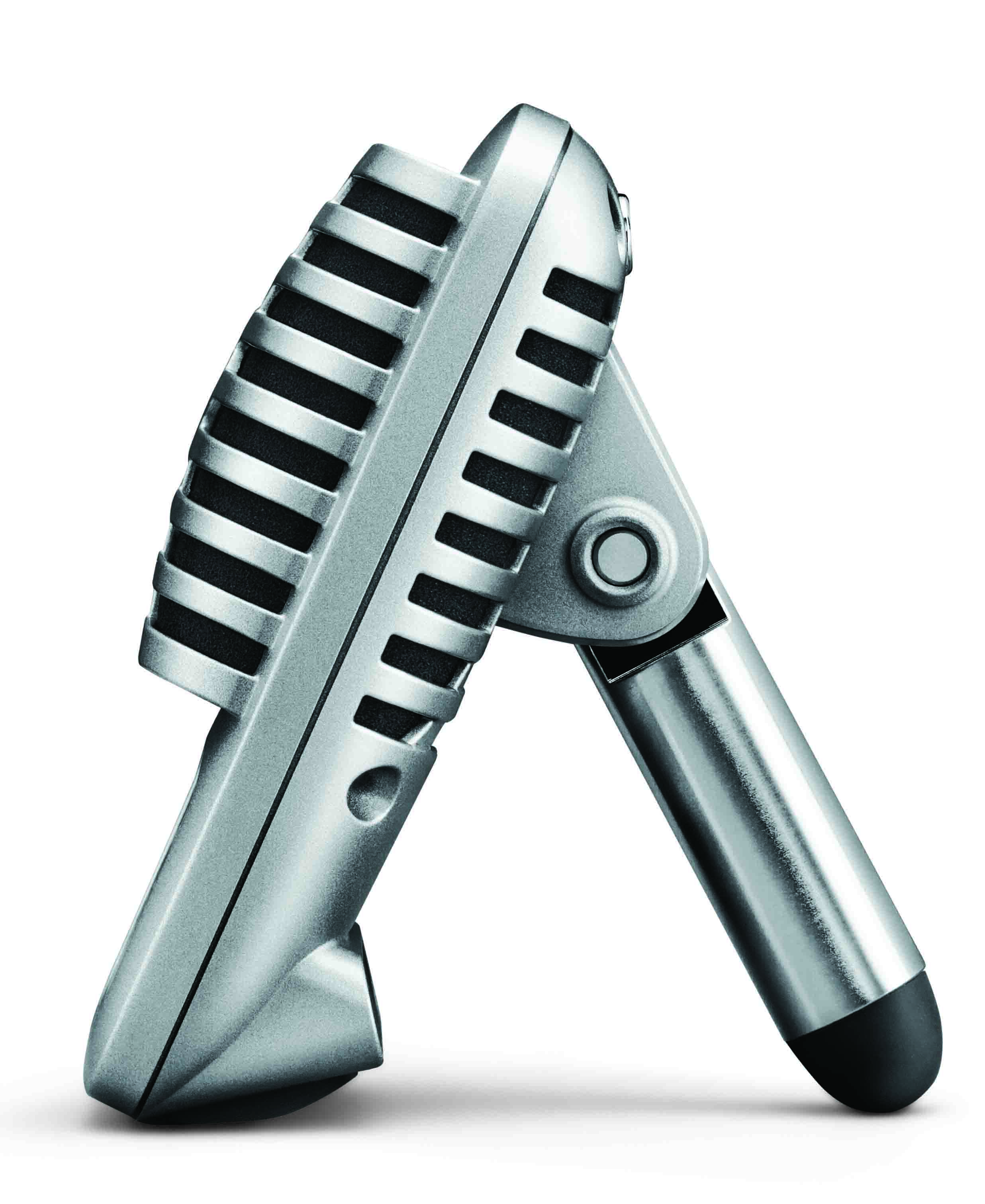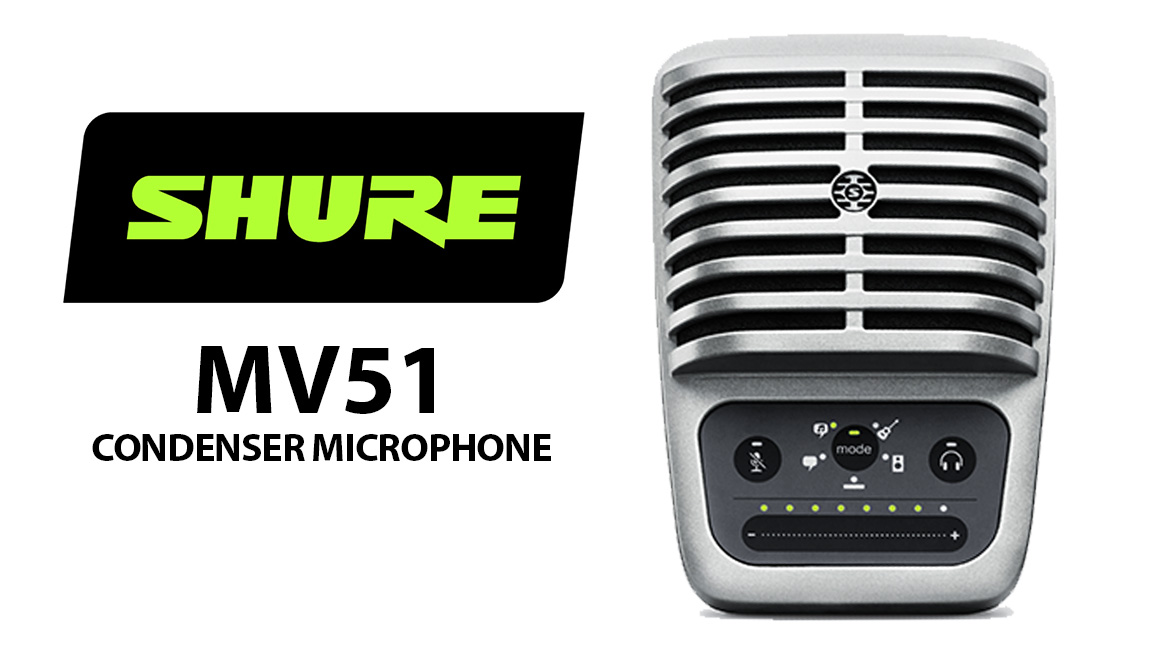Fine, I admit it: I suffer from mic envy. I'm always looking for that next tool that can help my "radio voice" sound that much better. During last year's Hybrid Strategies for UC&C virtual conference, I was joined for two sessions by the late, great Brad Sousa from AVI Systems. He had the Shure MV51 on a boom arm and I was blown away by the look and sound—and I knew I had to test it for myself.
Now, the MV51 is not a new model. You can tell because the back of the mic sports a Micro-USB port instead of USB-C, which is quickly becoming the de facto standard. But if you are looking to upgrade your audio for videoconferencing, podcasts, and other projects, let me tell you why you might want to take a new look at this older—dare I say vintage—USB mic.
[Tiny Mic, Big Sound—Meet the New Shure MoveMic]

First, despite a dated USB port, it has proper technical specs. With a large diaphragm for capturing big sound and a cardioid pickup pattern, the MV51 condenser mic has a sampling rate of 44.1/48 kHz and 20-20,000 Hz frequency response. It also includes a 3.5mm headphone jack, which is useful for live signal monitoring when you have a simple audio setup. The mic relies on phantom power via the connection to your computer, tablet, or cell phone.
I know the modern world of videoconferencing and podcasting is full of headphones, microphones, mic stands, and other accessories. My personal rule is that if I can't avoid keeping my equipment in the shot, make sure it's worthy of being seen. The MV51 passes this test with flying colors.
The lines on the grille are strong, offering a great retro look. It's also a solid build, with an all-metal (diecast zinc) design. According to Shure's John Miller, who served as director of industrial design during its creation, the MV51 was based on the Model 51 mic, which was introduced a couple of years after World War II and manufactured for almost 30 years. The resemblance is obvious, and the new mic even features Shure's logo design from the 1940s.
Of course, the Model 51 didn't have a touchpanel on its face. The touchpanel gives you easy access to your mic and headphone levels. Indicator lights glow green in mic mode; simply slide your finger across the indicators until you are at the level you want. Press the headphone icon and the indicator lights turn amber to avoid confusion. A mute button with a bright red light also makes it clear when your mic is not in use.
[SCN Hybrid World: Expert Insights and 16 Speakerphones to Know]
Five preset modes, which can be adjusted via a touchpanel on the front of the MV51, help you optimize your pickup pattern and EQ. The "speech" mode is ideal for my work, but there are modes for acoustic instruments, live performances, and singing. Planning to sweeten your audio in post? There's also a "flat" mode without processing.

One feature I love is the integrated adjustable kickstand. Just place the MV51 on your work surface and aim it toward you. You can also unscrew the rubber tip from the end of the stand and attach the mic to a standard 5/8-inch mic stand or boom arm (see photo).
Shure included three cables with my MV51: Micro-USB to USB-A, Micro-USB to USB-C, and Micro-USB to Apple Lightning (for those who don't have the latest iPhone upgrade). However, in Shure's MOTIV app, the MV51 is not fully supported via USB-C, so users with a Lightning connection have access to more extensive settings in the app, such as custom presets. The mic records to MOTIV via USB-C without issue—but we definitely need a software update here. It'd be great to add the MV51 to the desktop app, too.
None of these features matter if the mic doesn't deliver quality audio, but the MV51 performed very well. You can hear my sample audio, a reading of part of my February 2024 editorial, here. I recorded the sample in "speech" mode using Adobe Premiere Rush with no additional processing. I think I caught one P-pop when I said my last name, but otherwise it warmed up my vocal nicely. Between its performance, features, and healthy dose of style, the MV51 is still a mic to consider for your desktop audio activities.

